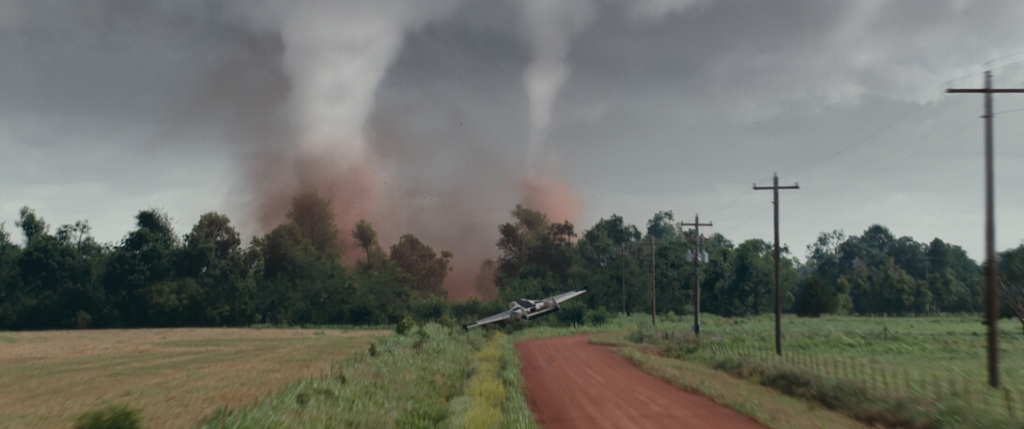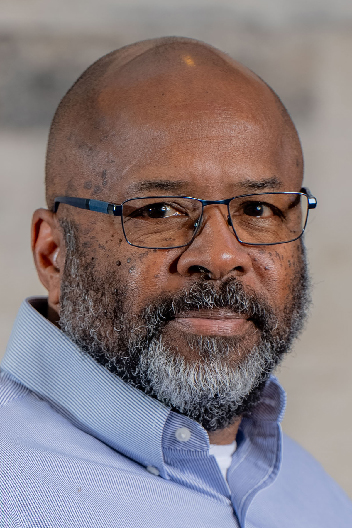Leslie Reed, July 15, 2024
‘Twisters’ draws from storm-chasing science led by Nebraska expert
Adam Houston, professor of Earth and atmospheric sciences at the University of Nebraska–Lincoln, like many moviegoers and weather buffs, is eagerly awaiting the July 19 premiere of “Twisters,” the tornado-chasing blockbuster movie.
Houston, who studies tornadoes and supercell thunderstorms, has made a career as a real-life storm chaser. A witness to scores of tornadoes during more than two decades of research, Houston was among scientists and weather experts nationwide who were contacted by “Twisters” director Lee Isaac Chung as he prepared to begin filming in early 2023.
“We talked about storm chasing in general and storm chasing in science – he wanted to get context for what that difference meant,” said Houston, who is a principal investigator with TORUS, a long-term research project that flies fixed-wing drones into storm clouds to gather data.
In trailer scenes for “Twisters,” an uncrewed aircraft that matches “RAAVEN,” the TORUS drone, swoops like a fighter jet toward storm clouds.
In an interview with The Hollywood Reporter, Chung said he hopes his summer blockbuster will inspire people to regard climate scientists as the real superheroes.

An uncrewed aircraft that matches “RAAVEN,” the TORUS drone, flies toward storm clouds in this scene from “Twisters.”
“One of the most challenging aspects of this film (was) to talk about the science of what’s happening with tornadoes in a way that’s understandable within a summer blockbuster film,” Chung said.
The RAAVEN’s appearance in the trailer surprised and delighted its lead developer, Brian Argrow, professor of aerospace engineering at the University of Colorado Boulder, when he first viewed it during the Super Bowl halftime this past February.
Argrow said he didn’t realize a blockbuster like “Twisters” was underway when a film crew contacted him in April 2023 for permission to create a radio-controlled model of the RAAVEN. He sent the moviemakers to make arrangements with the drone’s manufacturer. He didn’t learn much more about the movie until the first trailer dropped during the Super Bowl
“I don’t usually watch the halftime show, so I was about to go downstairs when the trailer came on,” he recounted. “I was shocked. This really is a big movie! And as I was watching, the RAAVEN appears. I said to my wife: ‘Did you see that? That’s a RAAVEN!’“

The couple quickly pulled the trailer up on YouTube to watch again. Then, they were on the phone with Houston and Eric Frew, the RAAVEN’s co-developer at the University of Colorado Boulder.
Frew helped design and implement the autonomy elements that enable the aircraft to fly on its own to follow ground vehicles. Argrow had told him the RAAVEN might be featured in a movie, but he was shocked and surprised to see it in the movie trailer.
The RAAVEN’s part in the movie hasn’t been revealed. Most likely, the drone will play a supporting role to “Dorothy,” the fictional instrument that launches hundreds of sensors into a funnel cloud to gather data. Dorothy debuted in “Twister” and is coming back for “Twisters.”
However, the RAAVEN already is a star.
Since 2017, the 7½-foot-wingspan drone has played a leading role in TORUS, or Targeted Observation by Radars and UAS of Supercells, which combined drones and tracking vehicles to gather thunderstorm data. Houston, Argrow and Frew were principal investigators for the project, which involved the University of Colorado Boulder, the National Oceanic and Atmospheric Administration’s National Severe Storms Laboratory, the University of Oklahoma’s Cooperative Institute for Severe and High-Impact Weather Research and Operations and Texas Tech University.
“No one else is doing what we do,” said Argrow, adding that it’s the RAAVEN and its mobile ground stations, authorized by the FAA, that make the research unique.

The RAAVEN can fly as fast as 90 mph and has a battery life of up to three hours, putting it ahead of standard rotary wing drones, which can’t keep up with storms moving at 30 to 60 mph and often run short of battery life, Argrow said.
In field research, the scientists typically launch the RAAVEN 10 to 15 miles downwind of a thunderstorm. Houston’s specially equipped tracking vehicles follow below as it flies into the thunderheads.
Houston was an undergraduate student studying meteorology at Texas A&M University when “Twister” came out in 1996. Houston, Argrow and Frew all have fond memories of the first movie, which grossed nearly $500 million worldwide.
“The fact that the heroes were scrappy and had to make do with the equipment on hand resonated with me as an engineer who takes joy in solving problems with technology,” Frew said.
“Twister” ignited that generation’s interest in weather science. Houston said he hopes “Twisters” will inspire a new generation of scientists to pursue careers in meteorology, climatology and related fields.
Houston reflected on some of the changes in weather science that have occurred since “Twister” was released. One major difference is that today weather radar and forecasts are readily available to scientists and laypeople alike via smartphones. Another is the social media-fueled emergence of professional storm chasers, who make money from posting videos and taking people out to watch storms.
The scientist vs. chaser tension is evident in a “Twisters” trailer.
“Our crew’s not like your crew; we don’t need Ph.Ds and fancy tech,” Tyler Owens, the so-called “tornado wrangler” played by Glen Powell, tells researcher Katie Carter, played by Daisy Edgar-Jones, in one scene.
“In the storm chase world, there are people like that,” Houston said. “And some of them are good chasers – they’re legit and they know what they’re doing.”
Forty years ago, the weather monitoring system relied on volunteer storm spotters, often affiliated with or trained by groups like the Nebraska Amateur Radio Emergency Services or the Civil Air Patrol, Houston said. Unlike storm chasers, spotters report observations to the National Weather Service from fixed, pre-assigned locations.





